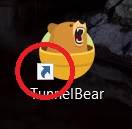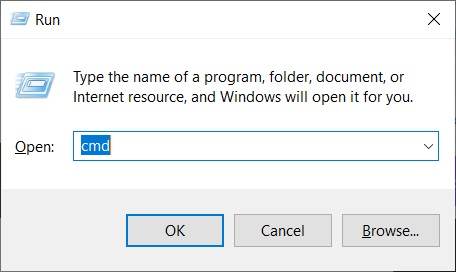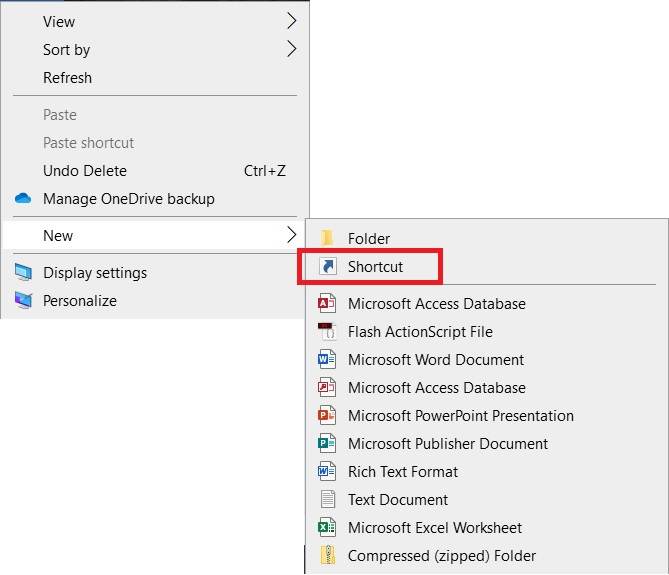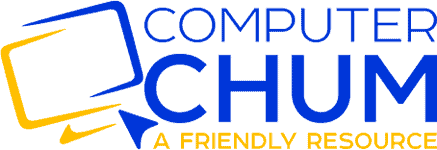What if you could use shortcuts to customize your computer so that the things you need and use the most are fast and easy to access? That’s where Windows desktop shortcuts and their simple features really shine.
Shortcuts in Windows are icons that point to what you’re trying to access by storing a location for it in a light, compact package. When you click on a shortcut, it opens the item found at the location it has. Shortcuts allow users to set up their computers to improve access, speed, and convenience.
Most people don’t notice the difference between shortcuts and the real thing, and happily, that detail doesn’t matter. However, to promote using shortcuts, Windows includes some features that make working with shortcuts even easier. Features such as the ‘pin’ action where you can ‘pin’ certain applications to the Start Menu or the Taskbar.
How to Make & Use Application Desktop Shortcuts

Desktop application shortcut for Tunnel Bear – Shortcut indicated by the white square with the dark arrow.
Application shortcuts are shortcuts to an application installed on your computer. Most people have a handful of applications that they use most of the time or on some frequency. For me, the location of the shortcut is related to how much I use it.
If I use it multiple times per day, I like to pin it to the Taskbar. If I use it once a day or less, I like to have it in the Start Menu. I also set up all of my applications so that I can open them using Windows Run.
If you’re the kind of person that is more familiar with the file structure and where your software rests on your drive, you can make shortcuts manually.
To do this, right-click the desktop, or in the folder you would like to have the shortcut, hover over New, and then select Shortcut. The wizard will take you through a process to find the location of what you want to link to.
These simple tweaks mean I can access applications quickly when I need them. For example, to make an application shortcut, find it in the Start Menu scrolling list and then click and drag it to the Start Menu, the Taskbar, or the Desktop. When you do this, you should see a little ‘Link’ graphic until you let go of your mouse button, placing it.
To remove it from the Start Menu and Taskbar, right-click it and select ‘Unpin’ Unwanted shortcuts on the desktop can get put in the trash can, or you can right-click them and select Delete.
Next, you can arrange your shortcuts by clicking and holding them while dragging them to where you want them to be. Finally, you can rename some shortcuts by right-clicking them and selecting Rename.
How to Set Up Desktop Shortcuts for Windows Run
Getting fast and becoming efficient with your computer use means using the keyboard as much as possible and using the mouse less. If possible, you want to use the mouse as little as you can—one big step towards achieving this is to open applications or commonly used files with your keyboard. On Windows, the tool for this is Windows Run.

Windows Run is a little application that uses your path variable, which holds multiple locations or file paths. It uses that information to let you open or run anything that sits in one of the locations it stores.
So, if we place a shortcut to one of our most used applications with a custom shortened name that’s easy to type, Windows Run will find it and open it when we type in that shortened name and hit enter.
You can find a place that already has a path in the path variable and put your shortcuts there, but you need to be selective. For example, if you work in one of your operating system folders and create a conflict or make a clicking error and damage something, your operating system can be down, possibly requiring a complete reinstall.
A safer option is to add a Links folder for your shortcuts somewhere and add the path to your path variable.
To set up a unique folder for your shortcuts in Windows, create the folder where you want it on your C drive and add it to the path variable. To find detailed instructions on doing this, you can check out my article on the path variable.
Once you have your links folder set up with a few shortcuts in it and you’ve added it to your path variable, you’re ready to go. For example, you can open Windows Run by right-clicking the Start button and selecting Run or by pressing the Windows Key + R.
All you have to do to open an application is to type the shortcut name you created into the text box and press enter. Voila!
How to Make & Use File Desktop Shortcuts
File desktop shortcuts are just like their application desktop shortcut cousins, except they open a particular file in the default application for that file. The reasons for creating them are fewer, although every bit as useful.
Some examples include a form that you need to complete regularly, a large writing project that you’re working on over a period of time, or an important resource like a schedule or performance tracker.
When it comes to File shortcuts, there are limitations to where you can place them. At the moment, you can place File shortcuts anywhere in the file structure, including the Desktop, or you can pin them to the Taskbar.
However, having lots of shortcuts on your Desktop can quickly get overwhelming so if you take that approach, make sure you have a system for organizing them.
To make a file shortcut for the Desktop or somewhere in the file structure, hold Alt and then click and drag the shortcut to where you would like it to be. You can also right-click the file, hover over ‘Send to’ and pick ‘Desktop.’ Or right-click and select ‘Create shortcut.’
Finally, if you’re familiar with the file structure, it’s also possible to right-click on the desktop or within the folder you would like to have it, hover over ‘New,’ and select ‘Shortcut.’ follow the wizard to complete it.

My personal favorite is to pin them to the Taskbar because I like to keep my Desktop clear. It means I can right-click the software icon for the file and get a drop-down list of my most used files.
By default, Windows also lists your most recently accessed files for that application, but there are no guarantees the file will be there when you want to access it. To pin a file to the Taskbar, click, hold, and drag the file to the Taskbar.
At work, we have several groups who build gigantic Excel spreadsheets that have become applications. The group that manages it enters data regularly, and the sheet does many concurrent calculations.
Aside from valuable information, the sheets produce charts and other predictive figures. Another group uses something similar to manage the outage schedule for equipment.
These massive spreadsheets produce useful information and sit on our network drives. So being able to access them with a right-click on my Taskbar is very useful.
How to Make & Use Folder Desktop Shortcuts
Folder desktop shortcuts are similar to files in terms of their placement limits but are also very useful. Sometimes a project you’re working on has multiple files and file types associated with it, which are conveniently managed in a folder.
You could make some file shortcuts for the most commonly accessed files, but sometimes it’s cleaner to stick to folders.
Like files, to make a folder shortcut for the Desktop or somewhere in the file structure, hold Alt and then click and drag the shortcut to where you would like it to be. You can also right-click the folder, hover over Send to and pick Desktop. Or right-click and select Create shortcut.
If you’re familiar with the file structure, it’s also possible to right-click on the Desktop or within the folder you would like to have the shortcut, hover over New, and select shortcut. Then, follow the wizard to complete it.
My preferred practice is to pin them to Explorer on the Taskbar like my file shortcuts. It means I can right-click the folder icon representing Explorer and get a drop-down list of my most accessed folders.
By default, Windows also lists your most recently accessed folders, but there are no guarantees the folder will be there. To pin a folder to the Explorer folder on the Taskbar, click, hold and drag the file to the Explorer folder.
I use this heavily at my work because we have an extensive system of network drives. It’s a great setup for sharing information, but sometimes you can do a lot of clicking to get to the folder where you need to be. So I use folder shortcuts to leverage our shared network drives and access the folders I need to faster.
How to Make & Use Website Shortcuts
Website shortcuts are an interesting feature. Luckily, there is a straightforward way to make them. You click and hold on the little lock on the left end of the web address and drag it to your Taskbar or Desktop. Whichever suits you the best.
If you want to have it on the Taskbar and rename it, you will need to drag it to the Desktop first, rename it, and then drag it to the Taskbar. Once this is done, you can delete the Desktop copy that you used for the renaming process.
One of my more clever uses for website shortcuts is to bypass my company forced homepage. Perhaps your company has the same thing. They lock your homepage to the internal company page so that before you can access the web, you have to see their announcements and other distracting information.
I found that I would open a browser to search for something specific, and by the time I was done with the distracting internal home page, I would often forget why I was opening a browser in the first place.
So finally, after being robbed of my productivity for far too long, I changed my browser shortcut to be one that opens Google directly instead of just opening the browser and letting it open the locked-in home page.
A great technique to accomplish this is to create a shortcut on the Desktop to my favorite browser and then add a command-line argument to the shortcut that turns it into a direct link to Google. Then I pin it where I want it to be and delete the shortcut from the Desktop.
When I open up my browser from that pinned shortcut, it takes me straight to Google, but my home page is still the internal company website. I get what I want, and I didn’t have to break any computer rules to get it!
Command-line arguments and how to leverage this trick merits an article of their own, which you can read here.
Another use for this type of shortcut is that my company is steadily moving towards web-based or cloud-based services for more and more things all the time. So having a handy group of shortcuts that take me straight to the web application that I need for any given reason really speeds up my workflow.
So right about now, you’re probably asking why I don’t just use the Bookmark or Favorites toolbar. Of course, I do, but I use it for things I may want to access when I’m already on the web.
When I’m not on the web and need to access an internal web-based or cloud-based tool, the shortcut method lets me access it with two clicks and a single webpage load. If I use the browser Bookmark or Favorites toolbar, I need two clicks and two webpage loads when starting from my Desktop. Not nearly as efficient.
My Preferred Setup for Desktop Shortcuts as an Example
Obviously, your workflow will be different, and this type of setup may not work for you, but I’d like to show you what I do so you can use what you like and leave what you don’t. I typically try to go for small changes or improvements that add up to something bigger over time.
For example, I like to put my Taskbar at the top so that my operating system controls are closer to the software controls reducing the amount of useless mouse travel.
File Shortcuts
The files that I set up as shortcuts are the previously mentioned big files, such as our comprehensive maintenance schedule or performance tracking and predictive analysis. Those are perfect candidates just by how we use them as a company.
Another great thing is that the same file gets used repeatedly without renaming it, so I never have to update my link.
The other prime candidate that I like to link to is internal policies. The bigger the company, the more policies there are. Some of these are used infrequently but still need to be referenced when a situation crops up. Usually, I need to be able to reference it briefly, but then I’m done.
At one point, I had copies pinned all over my office for quick reference, but now I pin them to the Taskbar. As a result, my office is cleaner and better organized.
Internal policies have a tendency to be reviewed on an annual basis, so you may have an issue with the file being renamed and breaking your shortcut. You also may have an issue where the old version is left untouched, and a new version is added.
Whatever your version control method, make sure you’re on top of it to not end up with outdated information.
Folder Shortcuts
My folder shortcuts involve the major file collections that I need to access on a week-to-week basis. Folders such as my personal network folder, folders we use for separate facilities, or folders dedicated to a given project.
We also have folders for cross-department coordination that I need to keep tabs on. Any shared folder that you need to access regularly is a great addition to your Explorer shortcuts.
These folders, especially network folders, are also susceptible to the renaming problem, but your shortcut will normally break, so you’ll know to check up on things. Another common issue involves computer users with less experience who drag folders into adjacent folders, so they become ‘lost.’
Once they’re moved back, everything will work properly again. If you track things down and find the folder missing, check the other folders in the directory.
Application Shortcuts
My work computer’s most frequently accessed applications include Microsoft Office products, the internal company ERP, and web browsers. Adobe PDF is also on there.
Now I can open my Microsoft Office applications and Adobe PDF application directly from the Taskbar, but they also have pinned files. We use SAP for an ERP, and it’s a beast. There really isn’t anything you can pin to it as far as I know, but it doesn’t really work that way anyway.
I set up all my web browsers as direct links to Google using the command-line argument method. I use the direct link to Google trick to bypass the internal corporate homepage and avoid that hit to my productivity.
Web Shortcuts
Web shortcuts are great if you need to go straight to a browser-based tool or resource. As mentioned, at work, we’re using more and more of these all the time. This is a fast way to launch them. That being said, this isn’t the only purpose for them.
If you have sites that you need to frequent regularly, this may also be a great option for you. Once you already have your browser open, the Bookmark or Favorites toolbar likely becomes more appropriate.
Desktop Shortcuts
I actually try and stay away from these. I know that this is a great place to put everything for some people, but it ends up cluttered and problematic any time I’ve tried it, slowing me down. On the other hand, if you only have a handful of things you do on your computer and manage your files well, it can work great.
There is an infinite number of ways to organize your computer. As long as it functions well for you, there’s no wrong way to do it.
